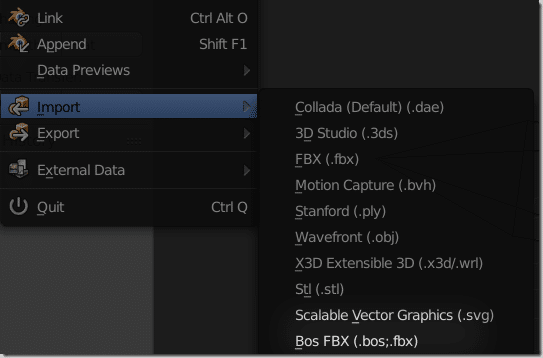
For the FBX binary file format, the Blender Foundation published an unofficial specification, as well as a higher level unofficial spec (work in progress) for how actual data is laid out in FBX (independent of ASCII or binary format). While neither of the formats is documented, the ASCII format is a tree structured document with clearly named identifiers. The FBX can be represented on-disk as either binary or ASCII data its SDK supports reading and writing both. The Godot game engine has a FBX importer without using the FBX SDK. Blender includes a Python import and export script for FBX, written without using the FBX SDK and The OpenEnded Group's Field includes a Java-based library for loading and extracting parts from a FBX file. There are two FBX SDK bindings for C++ and Python supplied by Autodesk. The FBX file format is proprietary however, the format description is exposed in the FBX Extensions SDK which provides header files for the FBX readers and writers. Later in 2006, support for properties was added to FBX. The Autodesk FBX plug-in allows all types of data to be packaged into one file format that can be used by most of todays 3D authoring software. Alias was acquired by Autodesk on January 10, 2006.
#Autodesk fbx exporter 2012 download software#
A Software Development Kit was developed in 2005 to standardize the object model and allow other software developers to provide plug-ins of their own. Autodesk Navisworks NWC Exporter Utility 2019 for AutoCAD, Revit, 3ds Max, Bentley Microstation, Graphisoft ArchiCAD (free export to. Alias announced its intention to acquire Kaydara on August 8, 2004, reaching an agreement in September. Autodesk Navisworks NWC Exporter Utility 2018 for AutoCAD, Revit, 3ds Max, Bentley Microstation, Graphisoft ArchiCAD (free export to. DISCLAIMS ALL WARRANTIES, EITHER EXPRESS OR IMPLIED, INCLUDING BUT NOT LIMITED TO ANY IMPLIED WARRANTIES OF MERCHANTABILITY OR FITNESS FOR A PARTICULAR PURPOSE REGARDING THESE MATERIALS. In 2003, Kaydara launched FBX for Apple's QuickTime Viewer. The format saw wider support from other 3D software packages such as Cinema 4D, SoftImage 3D, PowerAnimator, LightWave 3D, 3D Studio MAX and TurboCAD.įilmbox was renamed MotionBuilder in 2002 with the release of version 4.0. In 1996, Kaydara released a new native file format with Filmbox 1.5 called FBX, which used an object-based model, allowing for the storing of motion, along with 2D, 3D, audio, and video data.

There was also demand from early adopters of Filmbox to implement a target character in a scene with the motion capture data, to enable the visualization of the data in a 3D view with display markers. This method of storing data did not work well with different versions of Filmbox. This data was a serialized version of the libraries (binary dump), containing read/write memory data. The format only supported motion data, user preferences and a list of devices used in the capturing of the motion data. Prior to 1996, Filmbox 1.0 used a file format called FLM.

FBX originated as a replacement file format for Canadian company Kaydara's Filmbox, a software for recording data from motion capture devices.


 0 kommentar(er)
0 kommentar(er)
